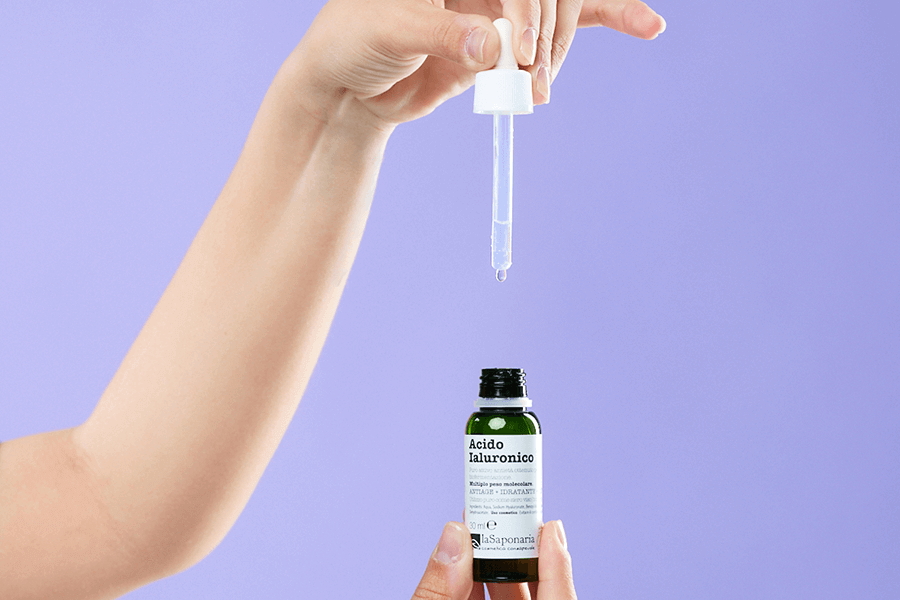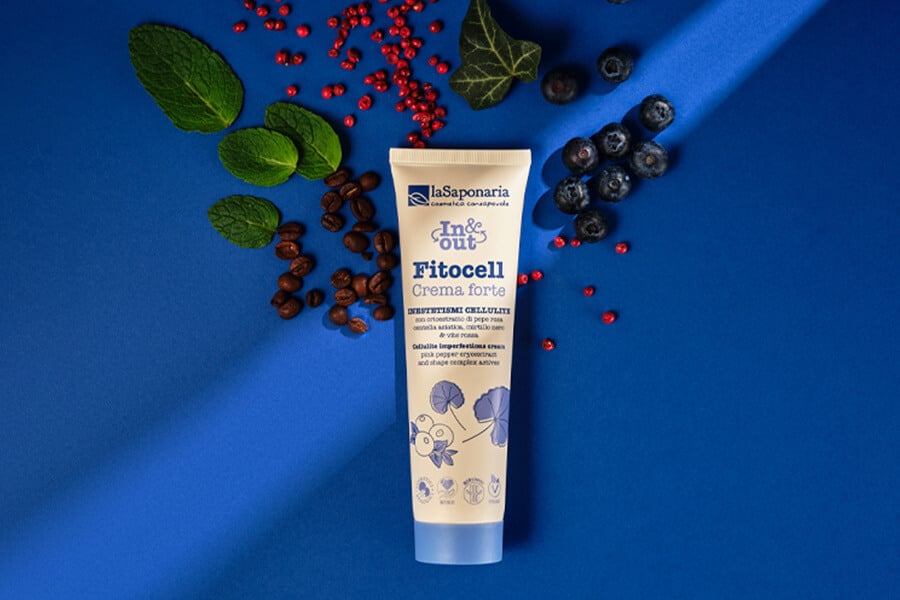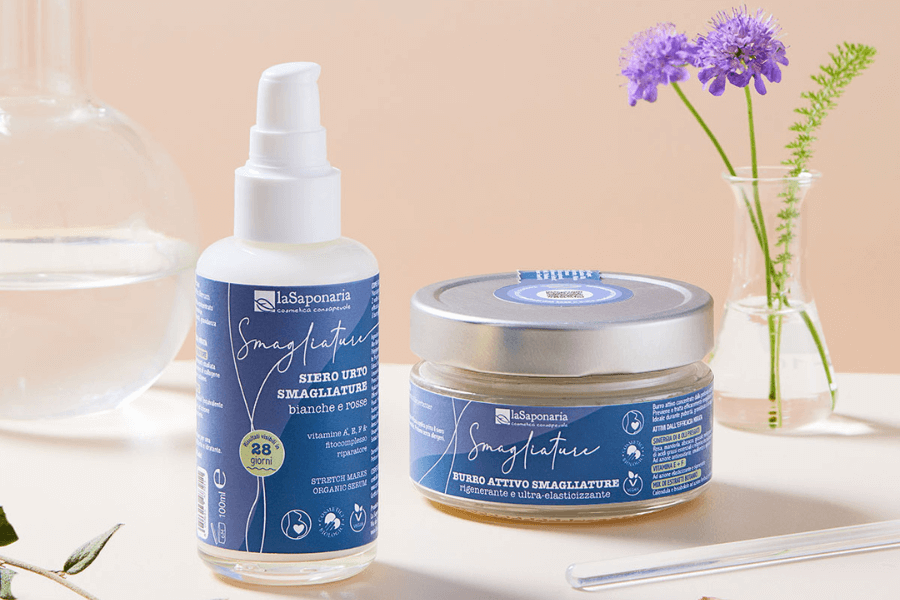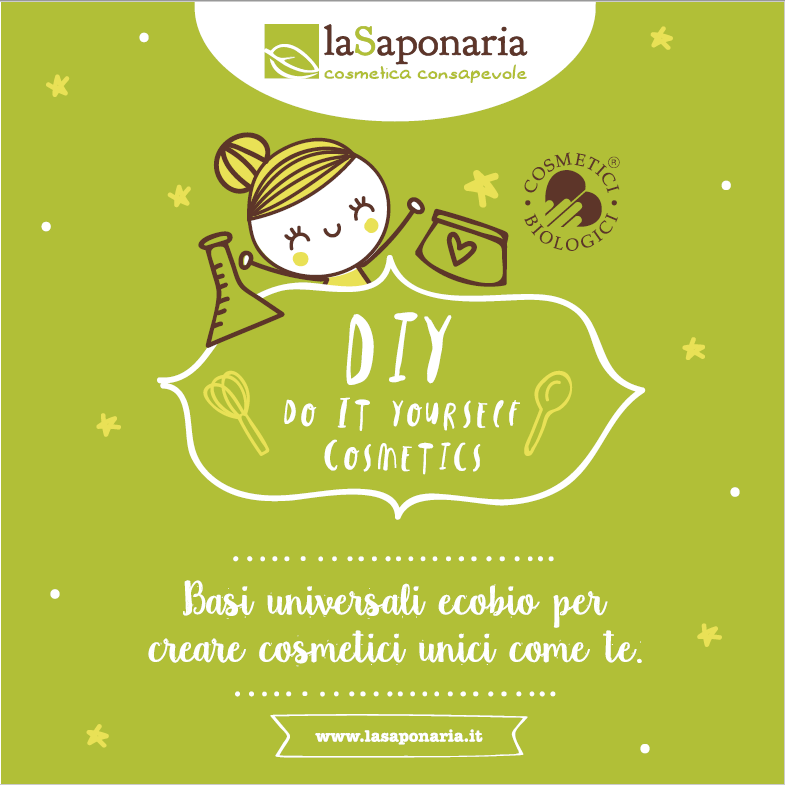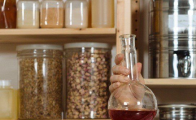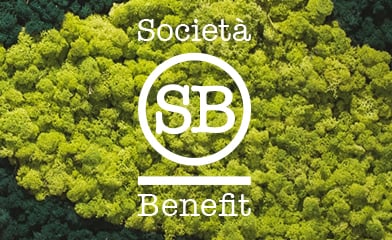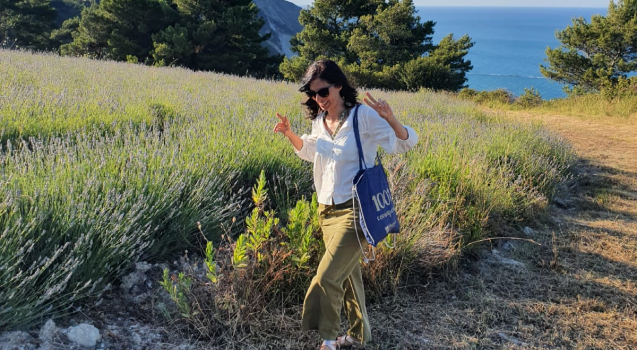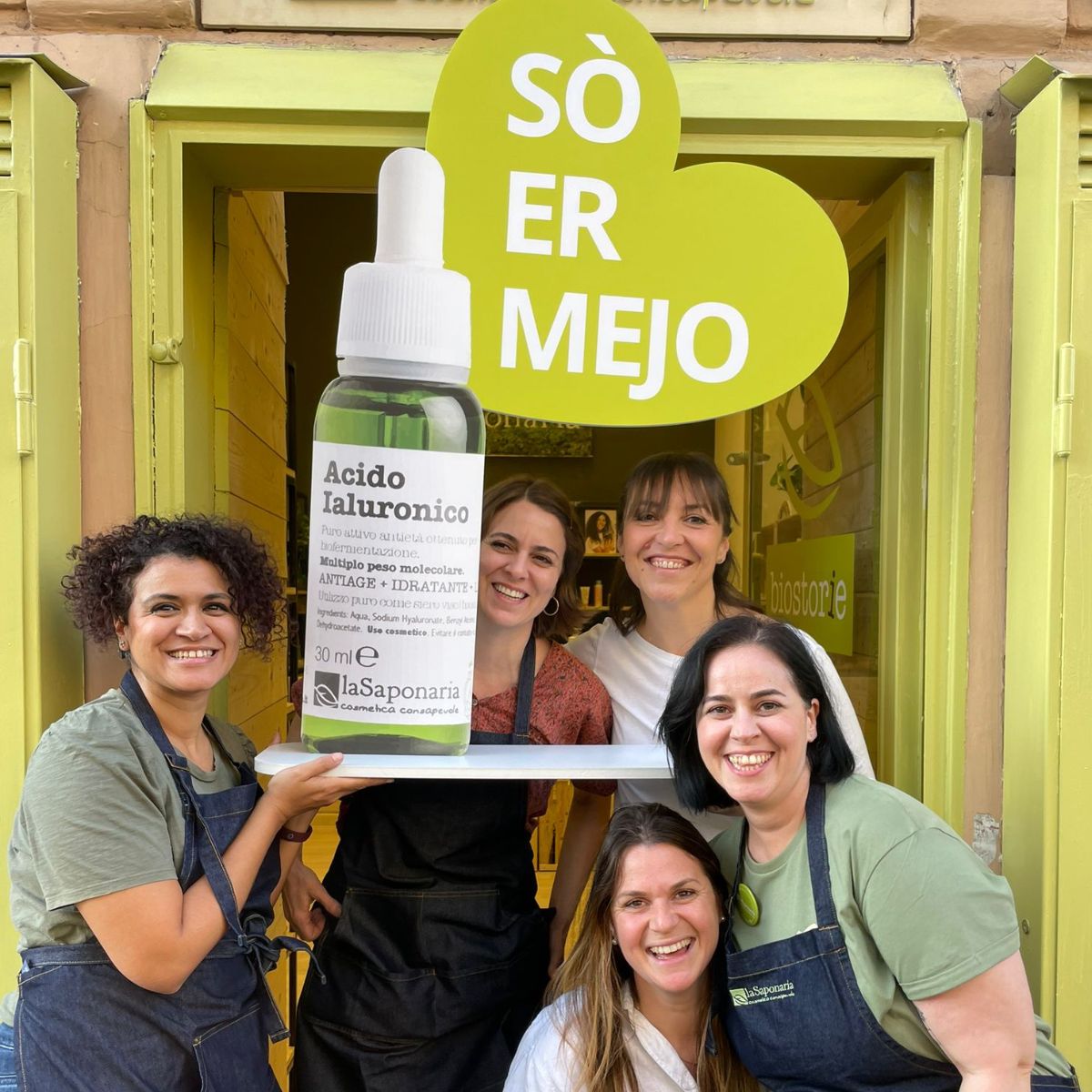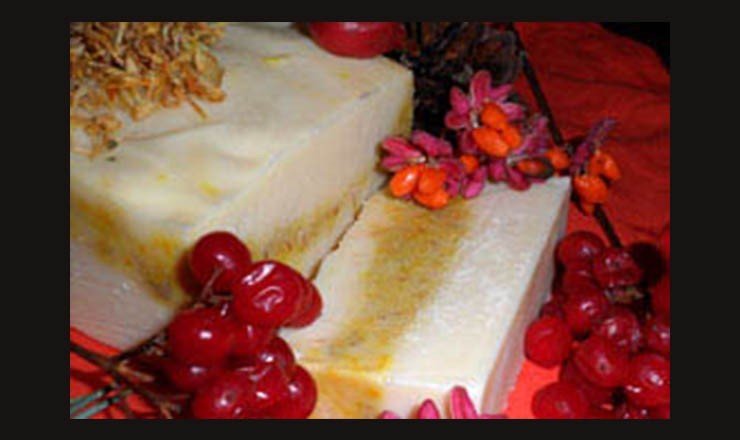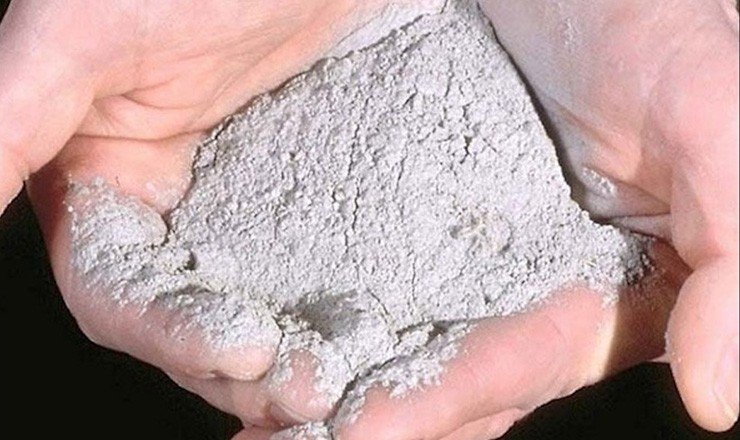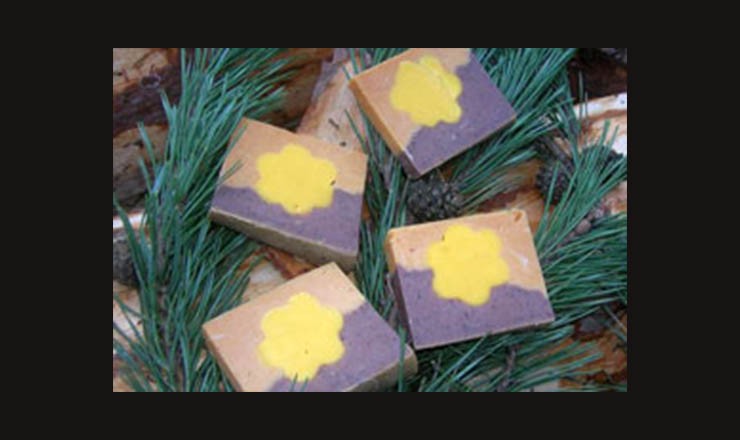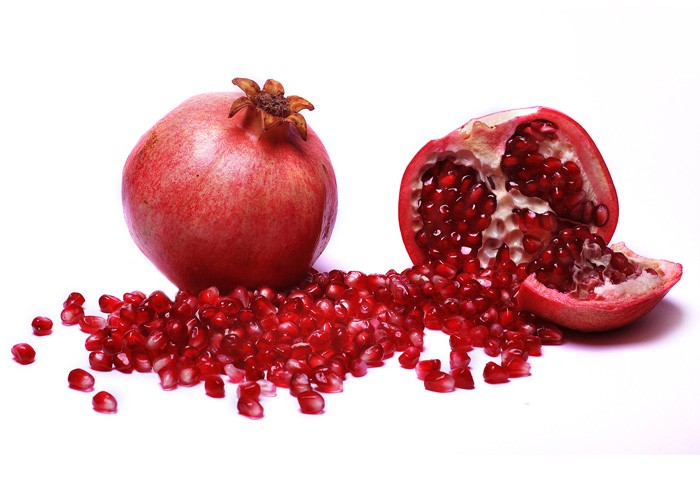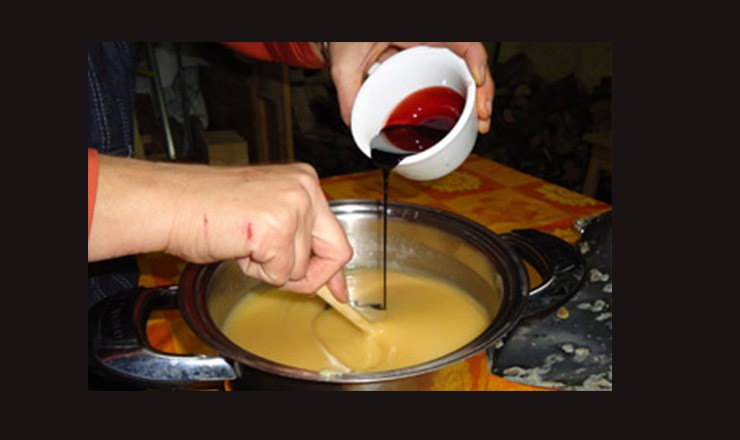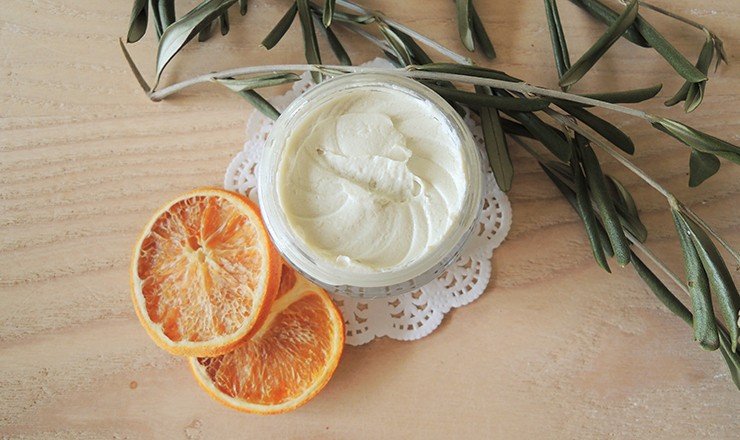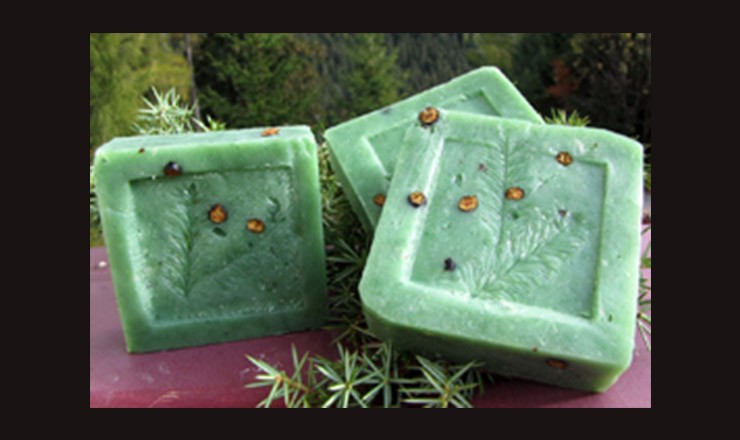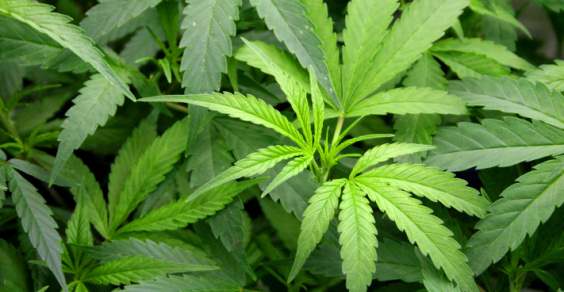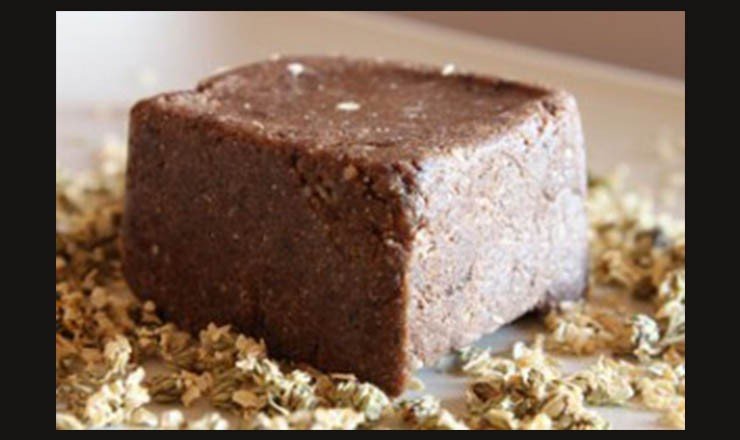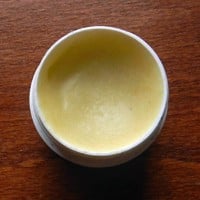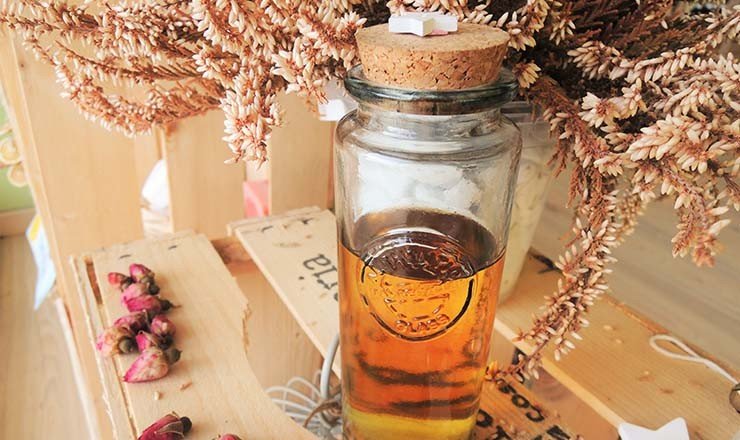Ingredients: Sodium-Hydroxide
Recipe submitted to the "Saponi e buoi dei paesi tuoi" self-production contest. Why does it represent the proverb "saponi e buoi dei paesi tuoi?" I created this soap inspired by the enchanted forests and meadows of the Monti Sibillini that I have the joy of admiring from my windows every day. It's as white as the silent snow that soothes the souls of those who wander through the sleeping woods during the winter season. A yellow band runs through the middle, where some dried petals of calendula, chamomile, violet... are concentrated to remind us both of the sun's rays that penetrate the dense foliage of the woods, creating the fantastic sensation of being able to spot a fairy at any moment, and of the flowers that flood these mountains' meadows with shapes and colors in spring and summer. It's a gentle, refreshing soap that leaves the skin as soft as the waters of the countless streams that gush happily from those rocks. In honor of the "fairy" who has dwelled among these magical places for centuries and still fascinates even the most incredulous, I named it the Sibilla soap.
When in the 60s I went with friends for a picnic "out of town" to the Roman Castles, we played in the meadows and chestnut woods, falling and rolling among the mint plants that grow there wherever there was a little sun and then we stopped in some trattoria where in the warmth of the fireplace we all ate together at a wooden table the pecorino romano and the porchetta from Ariccia with wild cicely. The mint and cicely soap is made with extra virgin olive oil from our region with the addition of Roman mint leaves and wild cicely flowers collected by me during the summer and dried. The soap mold recalls the shapes of pecorino romano and from this derives the name sapo-rino. Table salt causes the soap to dry very quickly. Even if the soap can be used immediately, it is best to let it dry for at least 15 days. Coconut oil is used to create foam. The yellow / green dotted color is given by the added dried plants.
Why does it represent the proverb "Saponi e buoi dei paesi tuoi"? Resia is a valley located in the easternmost corner of Friuli, nestled between Austria and Slovenia. It is home to a unique population in terms of language and culture, expressed through music, dances, traditions, and truly special folk festivals! In our language (Resian), "Val Resia" means Valley of Flowers. The valley is indeed an explosion of colors and scents from over 1200 plants (species and subspecies) found in the area, some of which are endemic.
To represent it, I chose a combination of colors and ingredients:
Brown to celebrate the land: rich and generous.
The central yellow flower to symbolize some of these flowers: St. John's wort, arnica, primroses, dandelion, goldenrod, calendula...
Honey, castor wax, lavender, and almonds: precious gifts from my beloved land.
Recipe candidate for the "Saponi e buoi dei paesi tuoi" (Soaps and Oxen from Your Own Country) self-production competition. Why does it represent the proverb "Saponi e buoi dei paesi tuoi"?
A small village nestled on a hill at 650 meters above sea level, adjacent to the Pollino National Park, with fewer than a thousand inhabitants, far from other urban centers, 70 minutes from the sea, distant from train stations, airports, universities, and so on. This humble soap was created to highlight the naturalness, richness, and sweetness in the poverty of our region.
The naturalness of our APPLES: small, ugly, and nameless apples, but naturally flavorful and beneficial.
The richness of the POMEGRANATE: those stolen from the orchard at the end of the village to be sold at the fair on the third Saturday of October, gathering 50 lire for each fruit. "What richness?" But the wealth is in the fruit, rich in minerals, vitamins, beneficial substances for the body (flavonoids, antioxidants, and various types of active acids).
The sweetness of HONEY: the one we all have in the pantry and in the drawer of our memory, the one that grandma obtained from a beehive found on a tree in the countryside.
OLIVE OIL: the best defense against allergies or other skin irritations that can occur from using industrial soap.
Recipe submitted to the "Saponi e buoi dei paesi tuoi" self-production contest. Why does it represent the proverb "Saponi e buoi dei paesi tuoi"? The grape and olive harvest is a time to gather all the relatives who live far away due to work migration. It's a festive moment and brings joy to the elderly when they pack a container of olive oil and one of wine in their children's suitcases. It's added to the freshly squeezed grape must to keep the wine good throughout the year without the addition of chemicals and preservatives. Why Vincotto:
It's added to the freshly squeezed grape must to keep the wine good throughout the year without the addition of chemicals and preservatives.
It's used to eliminate the annoying bubbles on the palate.
It's used in dessert preparation.
It was used to make delicious snow granitas to be enjoyed by the fire during cold winter days.
Why olive oil:
It's natural.
It's found in our grandparents' pantries.
It has been known since ancient times for its beneficial properties on the skin.
It has emollient and softening properties without the addition of artificial colors or fragrances, resulting in a completely natural, biodegradable, and non-polluting soap.
It's the best guarantee against allergies or other skin issues caused by the use of industrial soap.
Place represented by the soap
Brianza (Lombardy)
Beekeeping in Brianza is a little-known little pearl. Despite being at the gates of a large metropolis, there are many small businesses that are dedicated to the production of honey, pollen, royal jelly, propolis and the like, each with its very precious properties. Honey in particular has regenerating properties for damaged tissues, has energizing properties, strengthens the skin's defenses and protects against smog, atmospheric agents and sudden changes in temperature.
Even in the choice of the soap base, we tried to choose mainly fats available in local production or in any case of Italian production, avoiding the massive use of too exotic fats. At the same time, however, we wanted to obtain a complete soap with a consistent and soft foam and a warm and enveloping scent.
Recipe submitted for the "Saponi e buoi dei paesi tuoi" self-production competition. Why does it represent the proverb "Saponi e buoi dei paesi tuoi"? Because it contains honey produced in the valley at 1500 meters, juniper berries, and red fir needles collected in the woods behind the house, as well as essential oils of wild pine, juniper, and red fir to evoke the scents of the forest. The soap's green color also recalls the colors of the woods. Additionally, each soap mold was made using a piece of fir wood and two fresh twigs.

